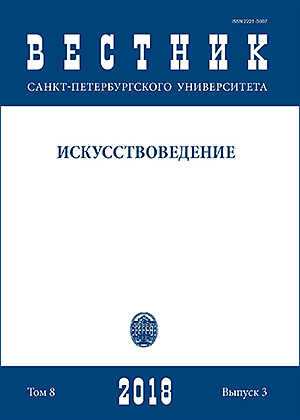“L’Ornement mystérieux” and Mark Kroll’s revision of the French baroque performance practice
DOI:
https://doi.org/10.21638/11701/spbu15.2018.301Abstract
The interpretation of ornaments has always attracted much attention of scholars and performers. Many Baroque musicians in their turn took pains to provide an explanation of ornaments realized in notation. Tables of these musicians have been thoroughly studied over the last one hundred fi ft y years, particularly, François Couperin’s table “Explication des Agrémens, et des Signes” which he included in his “Pieces de Clavecin” (1713). The authors of the present article came across a paper “L’Ornement mystérieux” by Mark Kroll published in Early Music 45, no. 2 (2017): 297–309. At first glance this work seemed to present a solidly founded hypothesis pertaining to the execution of one of Couperin’s ornaments, namely, to the “compound ornament” marked by the combination of a trill with a turn written above it: . According to M. Kroll’s new hypothesis, this compound ornament should be performed not in the traditionally accepted manner when the trill is performed first, and the turn — afterwards, but in the reverse order. Practically everywhere Kroll names this ornament also in the reverse version: “doublé/tremblement”. The purpose of the present article is to prove that the new hypothesis is basically unacceptable. Kroll did not pay due attention to the research of sources, relying only on four of them, while there were many more. In addition, the study of other very important historical sources showed that the turn was performed at the end of the “compound ornament” marked by the sign . Therefore, this conclusion also attests that the previous recommendations by A. Farrenc, A. Dolmetsch, P. Brunold, A. Geoff roy-Dechaume, K. Gilbert, Fr. Neumann, D. Tunley and other musicians, despite the fact that they were criticized by Kroll, on the whole, were correct.
Keywords:
French Baroque music, French harpsichord music, Baroque performance practice, François Couperin, L’Ornement mystérieux, ornamentation, Tremblement et Double, the compound ornament, doublé/tremblement
Downloads
References
References
Downloads
Published
How to Cite
Issue
Section
License
Articles of "Vestnik of Saint Petersburg University. Arts" are open access distributed under the terms of the License Agreement with Saint Petersburg State University, which permits to the authors unrestricted distribution and self-archiving free of charge.






